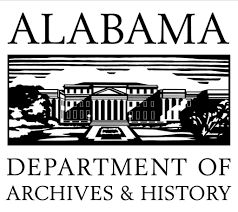CONTRIBUTED BY THE ALABAAMA DEPT. OF ARCHIVES AND HISTORY
ALABAMA —
The Alabama Department of Archives and History (ADAH) has opened a new temporary exhibit, History Lives On: Preserving Alabama’s Rosenwald Schools, at the Museum of Alabama. This exhibit was created by Auburn University’s College of Architecture, Design and Construction in partnership with the ADAH. It will be on view through May 2024.
In the early twentieth century, Julius Rosenwald, president of Sears Roebuck & Co., used his extensive financial resources to transform the landscape of public education in the rural, segregated South. Inspired by Tuskegee Institute — now Tuskegee University. President Booker T. Washington’s efforts to expand Black education, Rosenwald collaborated with Washington to pilot a community-matched grant program to fund the construction of six schools in central Alabama. The success of the program led Rosenwald to establish the Rosenwald Fund. Between 1917 and 1932, nearly 5,000 new schools were built in 15 southern states, including more than 400 in Alabama. Forty percent of Black children in the South attended a Rosenwald school at the height of the program. The success of the program is in large part due to Black communities and white supporters who advocated for educational opportunities, raised funds and maintained the schools for decades. By the time of widespread school integration in the 1960s, many of Rosenwald Schools were deemed too small or otherwise unsuitable for continued use. While some of these schools today have found new life as community centers, museums, and church facilities, most have disappeared from the landscape or are under threat of deterioration and destruction.
The exhibit is the culmination of a research project entitled Realizing Rosenwald. This multiphase project began in 2020 as an interdisciplinary collaboration with Auburn University Professors Junshan Liu (Building Science), David Smith (Graphic Design), and Gorham Bird (Architecture). The research focuses on the identification and documentation of extant Rosenwald Schools in Alabama using the latest technology to digitally measure and survey the existing places. The project has continued to expand to include efforts to assist with the physical preservation of some of Alabama’s remaining schools. This work has been funded by the Auburn University Creative Work and Social Impact Scholarship (CWSIS); seed grants from the College of Architecture, Design and Construction; McWhorter Fund for Excellence grants; and Auburn University Tiger Giving Day.
In addition to the team at Auburn, Dr. Kwesi Daniels, architecture professor at Tuskegee University, served as a key collaborator for the exhibit design, building on a twenty-year partnership between Auburn and Tuskegee to preserve Alabama’s remaining Rosenwald Schools. Many of the artifacts featured in the exhibit are on loan from the Mt. Sinai Community Center, housed in the only remaining Rosenwald School in Autauga County.
Visitors to the exhibit will learn not only about the individuals who started the Rosenwald Schools and the buildings themselves, but also about local communities across Alabama who worked to raise funds and to build and sustain these schools over generations. The exhibit will also explore today’s efforts by community members and alumni to preserve Alabama’s remaining historic Rosenwald buildings and the rich legacies they represent.
“We hope the public will gain a better understanding of the resilience and self-determination of the communities that worked to build and maintain these schools to educate generations of children,” said Bird, assistant professor of architecture and lead exhibit designer. “It’s been a privilege to meet and learn about the experience of alumni, to see their ongoing commitment to preserving the history of Alabama’s Rosenwald schools, and to share their stories through our research and this exhibit.”
“The Archives is grateful for this opportunity to work with Auburn University in amplifying the stories of Alabamians who collaborated in the early twentieth century to expand educational opportunities for African Americans, and of those who are striving today to keep alive the legacies of these vital community institutions,” said ADAH director Steve Murray.
The ADAH will host an opening event on Tuesday, Oct. 17. A reception will begin at 5 p.m. followed by a panel discussion about Rosenwald Schools and the Realizing Rosenwald research project at 6 p.m. The presentation is part of the ADAH’s ongoing History/Now series. The opening event is free and open to the public. It is sponsored by Seay, Seay & Litchfield Architects and the Alabama Humanities Alliance.
For more information, please call (334) 353-4689 or email alex.colvin@archives.alabama.gov.
The College of Architecture, Design and Construction (CADC) at Auburn University houses programs in architecture, interior architecture, landscape architecture, environmental design, graphic design, industrial design and construction management. Today, more than 1,500 students are enrolled in CADC’s highly regarded graduate and undergraduate programs, led by more than 40 faculty. Reflecting the land-grant mission of the university, CADC puts design thinking and building skills to work on today’s challenges, addressing sustainable and equitable solutions in all areas of the built environment.
The Alabama Department of Archives and History is the state’s government-records repository, a special-collections library and research facility and home to the Museum of Alabama, the state history museum. It is located in downtown Montgomery, directly across Washington Avenue from the State Capitol. The Museum of Alabama is open Monday through Saturday from 8:30 a.m. to 4:30 p.m. The EBSCO Research Room is open Tuesday through Saturday from 8:30 a.m. to 4:30 p.m. To learn more, visit www.archives.alabama.gov or call (334) 242-4364.
